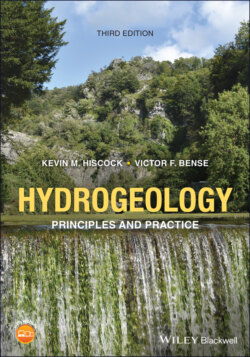Читать книгу Hydrogeology - Kevin M. Hiscock - Страница 30
1.6 Global groundwater resources
ОглавлениеGroundwater is an important natural resource. Worldwide, more than two billion people depend on groundwater for their daily supply (Kemper 2004). Total global fresh water use is estimated at about 4000 km3 a−1 (Margat and Andréassian 2008) with 99% of the irrigation, domestic, industrial and energy use met by abstractions from renewable sources, either surface water or groundwater. Less than 1% (currently estimated at 30 km3 a−1) is obtained from non‐renewable (fossil groundwater) sources mainly in three countries: Algeria, Libya and Saudi Arabia.
The increase in global groundwater exploitation has been stimulated by the development of low‐cost, power‐driven pumps and by individual investment for irrigation (Plate 1.5) and urban uses. Currently, aquifers supply approximately 20% of total water used globally, with this share rising rapidly, particularly in dry areas (IWMI 2007). Globally, 65% of groundwater utilization is devoted to irrigation, 25% to the supply of drinking water and 10% to industry.
Groundwater resources are often the only source of supply in arid and semi‐arid zones (for example, 100% in Saudi Arabia and Malta, 95% in Tunisia and 75% in Morocco). As demonstrated for the case of the North‐west Sahara Aquifer System (Box 1.3), irrigated agriculture is the principal user of groundwater from the major sedimentary aquifers of the Middle East, North Africa, North America and the Asian alluvial plains of the Punjab and Terai (WWAP 2009). Groundwater has been most intensively developed in South Asia and North America, where it provides 57 and 54%, respectively, of all irrigation water. The rapid growth in the construction of irrigation water‐wells now supplies 3.9 × 106 km2 of irrigated land in India, 1.9 × 106 km2 in China, 1.7 × 106 km2 in the United States and also across large areas of Pakistan and Bangladesh (Konikow et al. 2015).
Whether groundwater or surface water is exploited for water supply is largely dependent on the location of aquifers relative to the point of demand. A large urban population with a high demand for water would only be able to exploit groundwater if the aquifer, typically a sedimentary rock, has favourable storage and transmission properties, whereas in a sparsely populated rural district more limited but essential water supplies might be found in poor aquifers, such as weathered basement rock.
